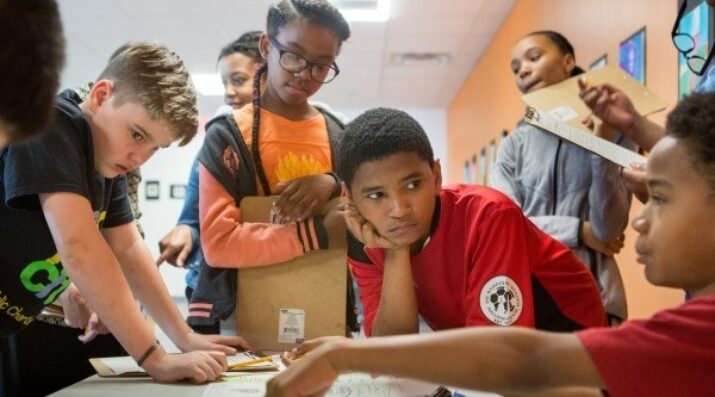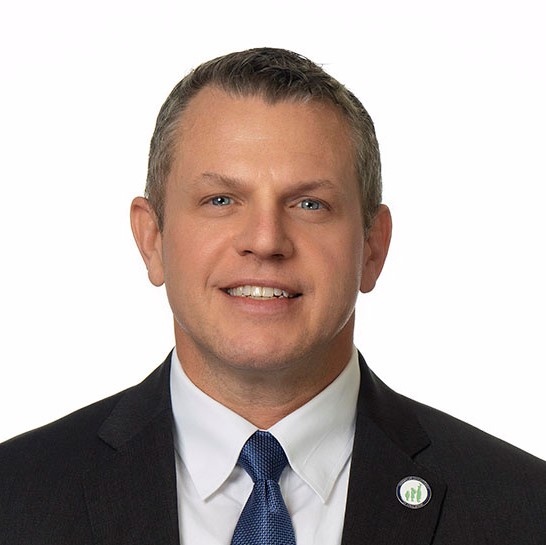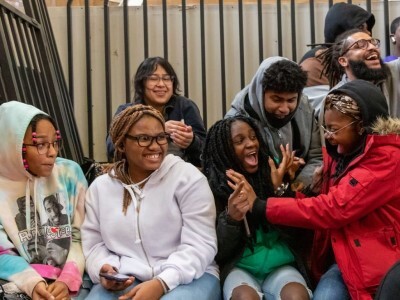Enabling Change
Building an Ecosystem of Support for Deeper Learning
Topics

Next generation learning is all about everyone in the system—from students through teachers to policymakers—taking charge of their own learning, development, and work. That doesn’t happen by forcing change through mandates and compliance. It happens by creating the environment and the equity of opportunity for everyone in the system to do their best possible work.
Given the demands and distractions school and system leaders face daily, where should the leader start, to build a thriving ecosystem for deeper learning? A state chief offers 3 key areas of focus.
When it comes to bringing deeper learning to life for our students, creating a supportive ecosystem is an essential step, and one on which system level leadership can have a tremendous influence. If you want the practices associated with more engaging and authentic student experiences to take root, spread, and ultimately transform what happens inside and outside our schools, then carefully tending to the culture and environment to support that shift is where leaders need to exert their influence and expend their resources.
Thriving ecosystems are a community of interconnections between organisms and the resources in their environment. They flourish with diversity and symbiosis, and they operate continuously—life never stops. If the right connections, interactions, and resources are put into place, then the ecosystem erupts with an abundance of life.
And just like the gardener or farmer, school leaders must work on creating intentional structures and supports where the people working and learning in our schools have what they need to thrive (both individually and collectively).
But given the cacophony of demands and distractions school (and system) leaders face daily, where should the leader start if they want to build a thriving ecosystem for deeper learning? Based on my experience as a superintendent and state chief, I’ll lay out three key areas of focus for building a supportive ecosystem.
1. It all comes down to the student experience.
Education leaders spend a great deal of time focusing on issues at the macro-level. We often see and speak about the work in terms of systems and processes. So, when it comes to creating deeper learning experiences for students, we tend to work first at that larger scale—budgeting, scheduling, credit systems, staff professional learning, etc.
All of these are important and have their place, but the leader bringing about deeper learning must be even more concerned about what’s happening at the micro-level: what is the student experiencing and are those experiences preparing that learner for the fast moving, globally interconnected, and automated world accelerating around them every day?
This is why a focus on student task is important. The concept of task cuts through differences in content or even educational philosophy—at some point, the instructor hands the work back to the student and asks them to do something. These tasks can be repetitive, mundane, and disconnected from the kinds of work young people will need to be successful as citizens and competitive in the global economy. Or they can be intentionally designed to require students to go deeper—demonstrating concepts such as sustained reasoning, adaptation, entrepreneurship, and leadership as part of the task. The PBL Works “Gold Standard” provides a wonderful framework for transforming tasks which may assist educators in making change.
This is not to say that the macro-level system work is unimportant—but it is to say that we need to consider (and possibly redesign) the systems and processes by putting meaningful experiences for students as the prime goal. Here in Kentucky, as part of an extensive listening effort that culminated in our United We Learn vision, Kentuckians told us that changing the experiences of our students was a major goal that they wanted for the future of our schools.
Ultimately, if the experience of the student is not different, then nothing really changes.
2. Run with the people who want to run.
Every change effort has laggards, detractors, and saboteurs. Efforts to bring about deeper learning are no different. As education leaders, we can spend an extraordinary amount of energy arguing with or trying to convince (or cajole) those who are opposed to the kinds of changes in student experience we are trying to bring about.
While there are moments when leaders need to exert some influence for hold-outs to “get on board” with the change, it is exponentially more important that education leaders work on connecting and supporting the champions for deeper learning.
Working at the system level, the leader can devise ways (and create and prioritize time) to bring those passionate about deeper learning together, so they can share and grow as an interconnected community. In Kentucky, we’ve prioritized our state COVID relief dollars to focus on creating better and more engaging schools than we had prior to the pandemic and we’ve directed resources to support our districts and regional cooperatives in the work of connecting and prioritizing deeper learning.
The concept of emergent change reminds us that, as leaders, we aren’t at the wheel of control as much as we’d like to think. Rather than forcing or pushing changes, better yields can be realized by nurturing and supporting. Especially at first, find-support-connect those already bringing about deeper learning in your schools and make sure they have what they need to go as far and as fast as they are able.
3. Build a diverse and lasting coalition of support.
Bringing about genuine and authentic deeper learning at scale is a heavy lift, requiring a sustained focus on change. It asks both students and adults to truly transform the experience of school in ways that challenge structure and processes dating back to the industrial revolution. It also requires more trust, time, and energy than just continuing to run the content-focused factory-model of education.
These kinds of meaningful pedagogical shifts can get whip-sawed back to a more basic and content-focused form of education if we don’t brightly illuminate the “why” behind these changes and work to create community-wide coalitions of support that can help fend off any reactionary efforts.
These coalitions of support are most valuable when they are intentionally broad and inclusive of people across different levels of formal power/authority: from the board chair all the way to community members who don’t have students in school and all points in between. As education leaders, we need to consider how we can bring along key influencers in this effort, especially the business community—who has been asking for this kind of learning shift for years.
We also need to bring along our teachers and other school staff—reconnecting the goal of deeper learning to the passion that probably got them interested in education in the first place. The thought of preparing slide decks and delivering monologues isn’t what pulled educators to this work. Every educator I know wanted to make a positive difference in the life of students and to build a better future.
Students should also be a central part of any supporting coalition. If we take the time to listen, students have a lot to say about how education could be improved as they have the most recent experiences learning in our schools. Students authentically aiding in the redesign of their own education is an incredible example of deeper learning in practice.
And we need to plan for how we can bring in people and groups who haven’t always had their voices at the table when educational decisions have been made in the past. In Kentucky, we created a Coalition for Advancing Education to lead and support our initial steps. This group was intentionally more diverse than the state’s population, ensuring that the voices of those not always at the table when education policy decisions were made were prominent and intentionally included as part of this guiding force.
The more energy and time the leader takes cultivating and building this coalition of support, the more likely the shift to deeper learning will “stick,” ultimately bringing about the transformation in student learning experiences our kids need.
In sum, leaders simply can’t bring about deeper learning shifts on their own—no matter how much any one person wants these shifts to occur, change will move at the speed of the students and those working most closely with them. But educational leaders can take intentional and proactive steps to put in place supportive ecosystems that can bring about the kind of learning transformations our students need.
Related Posts
Leading for Deeper Learning in Kentucky - Recognizing the need for a very different kind of school experience, this district leader started working with her community, first in Danville then in Jefferson County, Kentucky, to redefine success and reimagine learning.
Moving Forward to Transform Learning in Bullitt County, KY - Bullitt County's schools are using their new graduate profile so students become not just college and career ready but life ready too.
Fueling the Fire: In Kentucky, an Innovation that Honors the Past - Metcalfe County Schools is creating a community-based, authentic work experience in which students prepare for the future while honoring their community's past.
Photo by Allison Shelley/The Verbatim Agency for EDUimages. CC BY-NC 4.0




